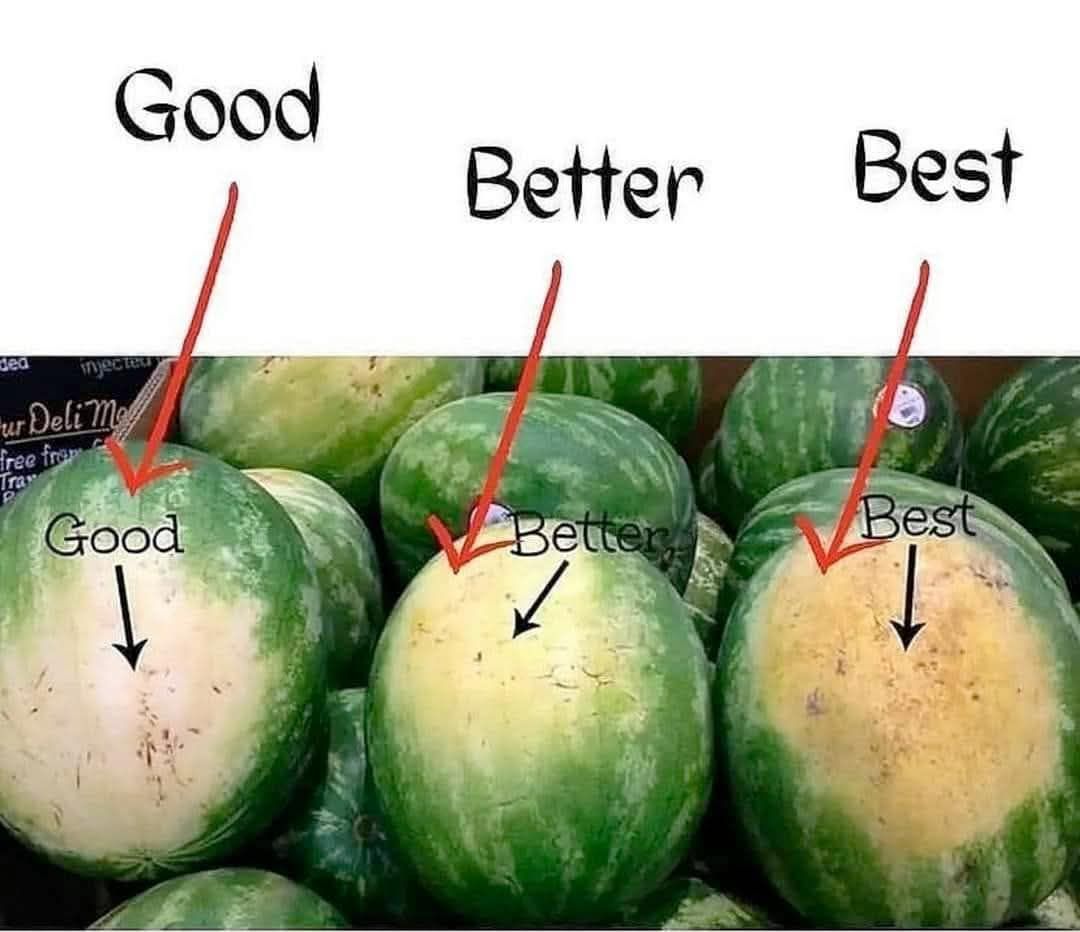ADVERTISEMENT
u hope. By considering factors like color, shape, texture, and sound, you’ll be able to confidently pick the watermelon that’s just right for you.
For Complete Cooking STEPS Please Head On Over To Next Page Or Open button (>) and don’t forget to SHARE with your Facebook friends
1. Look for the Right Color
The first step in choosing a ripe watermelon is to inspect its color. Watermelons should have a vibrant, consistent color, depending on the variety you’re purchasing.
- For traditional red watermelons, the skin should be a deep green, with minimal light or pale spots.
- For yellow or orange-fleshed varieties, look for a rich, golden skin that indicates ripeness.
A dull or faded green skin can suggest the watermelon is under-ripe. Watermelons with distinct dark green streaks could be overripe or past their prime.
2. Check the Sugar Spot – The Sugar Lump
A simple trick to check a watermelon’s sweetness is to look for a sugar spot or lump. This will appear on the skin of the melon and is an indication that the melon has a high sugar content. You’ll typically find it on the bottom, where the melon has been sitting on the ground, absorbing nutrients from the soil.
A sugar lump is a sign of a sweet melon and can help you avoid those bland or tasteless watermelons. Look for a smooth, round lump with a slightly yellowish tint.
3. Tap It – Listen for the Sound
Perhaps one of the most iconic ways to test a watermelon is by giving it a good knock. This might seem odd, but tapping the watermelon will produce a sound that can tell you a lot about its ripeness.
- A hollow, deep sound indicates that the watermelon is ripe and full of water content. It’s a sign that the melon is well-matured and packed with sweetness.
- If the sound is flat or dull, this could mean the melon is under-ripe or overripe.
When you tap, make sure to check the whole melon, as the sound can vary across different parts of the fruit.
4. Examine the Shape – Round and Symmetrical
A perfectly shaped watermelon will be symmetrical and round, without any major dents, creases, or bulges. Irregularities in shape can indicate that the melon has grown unevenly, and may result in a less-than-optimal texture or taste.
Check that the melon is well-rounded and sits flat without leaning to one side. The shape of the watermelon can indicate evenness in its ripeness, ensuring each bite has the perfect balance of texture and sweetness.
5. Check for the Field Spot – The Underbelly
Another important factor to consider is the field spot or ground spot, which is the area of the watermelon that was resting against the ground as it grew. This spot tends to be lighter in color and rougher in texture than the rest of the skin.
- A creamy yellow or light brown spot indicates that the watermelon is ripe.
- If the spot is white or pale green, it may be a sign that the watermelon was picked too early and may not be as sweet or juicy.
Don’t be afraid of the field spot—it’s actually a good sign when selecting a melon. The darker and more pronounced the spot, the better the watermelon will likely taste.
6. Weight Matters – Heavier is Better
When picking a watermelon, weight is one of the most important factors to consider. Heavier watermelons are generally more ripe and filled with more water content, meaning they’ll be juicier and sweeter.
Pick up the melon and get a feel for it. It should feel heavy for its size, indicating that the fruit has absorbed enough water from the vine to reach full ripeness. If it feels lighter than expected, it could be under-ripe or overly dry.
7. The Skin Texture – Smooth, Not Waxy
The texture of the watermelon’s skin can also give you clues about its ripeness. The skin should feel smooth, not too waxy, or too rough. A waxy skin may indicate that the watermelon is under-ripe or overly thick-skinned.
Give the watermelon a slight press. If the skin feels firm and smooth to the touch, it’s likely to be ripe. If the skin feels tough or waxy, consider picking another melon.
8. Look for the Right Size
Watermelons come in different sizes, and choosing the right size for your needs can make all the difference. Larger watermelons may have more flesh, but smaller melons can be just as sweet and easier to handle.
If you’re feeding a group, a larger melon is the obvious choice. But for a small family or an individual serving, a smaller melon can often be more manageable and just as satisfying.
9. Consider the Variety
Not all watermelons are the same. There are a few different varieties that each have their own characteristics:
- Seedless Watermelon: These tend to be the easiest to eat, and their flesh is generally sweeter and juicier.
- Seeded Watermelon: These tend to have a slightly firmer texture, and the seeds are often large and visible, though they can offer a more classic watermelon experience.
- Mini Watermelon: A great option if you’re looking for something smaller and easier to handle, with a sweet and refreshing taste.
- Yellow or Orange Watermelon: These varieties are typically sweeter than the traditional red watermelon, with a slightly honey-like flavor.
Conclusion: Mastering the Art of Selecting Watermelon
Picking the perfect watermelon doesn’t have to be a guessing game. By following these simple guidelines—checking the color, shape, sound, and weight—you can ensure that every watermelon you choose is packed with sweetness and juiciness.
The next time you’re at the market, take your time to evaluate the melons, and you’ll be rewarded with a watermelon that’s refreshing, sweet, and perfect for any summer occasion.
Happy melon hunting! Your next perfect watermelon is waiting for you.
